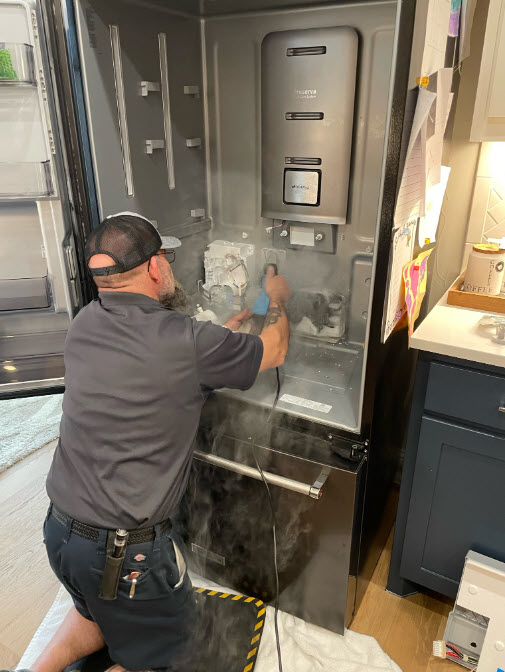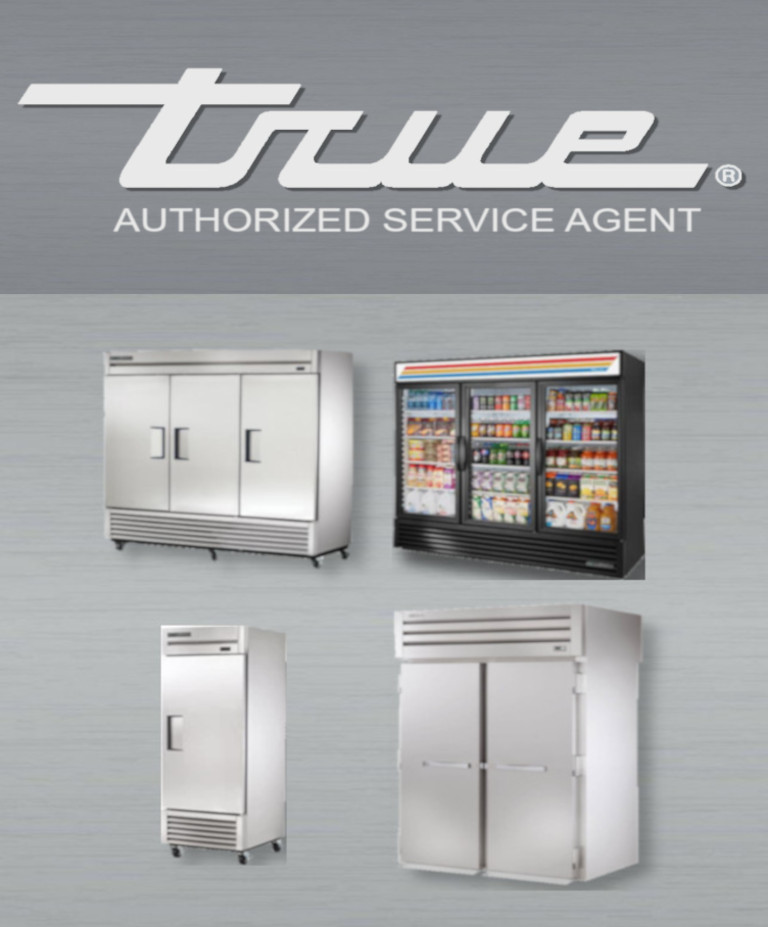Eco-Friendly Homes Start With Appliance Health with Repairs from Emergency Sub-Zero Repair Dependable Refrigeration & Appliance Repair Service
Eco-Friendly Homes Start With Appliance Health with Repairs from Emergency Sub-Zero Repair Dependable Refrigeration & Appliance Repair Service
Blog Article
The Ultimate Overview to DIY Device Repair Service Methods
From refrigerators to dishwashing machines, recognizing just how to troubleshoot and repair these tools can save you time and money. Are you all set to uncover essential methods that will empower you to deal with fixings with confidence?
Recognizing Typical Appliance Issues
When you rely on your home devices, it can be discouraging when they suddenly quit functioning or act up. Comprehending usual appliance issues can aid you troubleshoot issues effectively.
If your oven isn't heating, malfunctioning aspects or thermostat concerns might be responsible. Dishwashers typically experience troubles with drainage, so see to it the filter is clean and the drain tube isn't kinked.
Likewise, listen for unusual noises; they often indicate mechanical issues. By recognizing these indications, you can save time and potentially avoid pricey fixings. A little knowledge goes a long method in maintaining your devices, so stay educated to maintain whatever running smoothly.
Essential Tools for DIY Repairs
Prior to diving into do it yourself device repairs, it is necessary to gather the right tools to guarantee the process goes efficiently. Beginning with an excellent collection of screwdrivers, including both flathead and Phillips, as they're important for opening up most home appliances. You'll additionally want a set of pliers for clutching and twisting cables or small components.
Don't neglect a multimeter; it assists you test electric parts and detect issues effectively. An outlet collection comes in handy for loosening up or tightening bolts, while an energy blade can be beneficial for reducing wires or opening up product packaging.
Ultimately, take into consideration having a flashlight on hand to illuminate dark spaces inside your appliances. With these vital devices, you'll be well-equipped to deal with various fixings, conserving both money and time. Collect your gear and obtain ready to roll up your sleeves!
Security First: Preventative Measures to Take
Before you start any kind of device repair, it's necessary to prioritize safety. Make sure you use personal protective equipment, detach the power resource, and maintain your job location arranged. These basic precautions can help avoid mishaps and ensure a smoother repair work procedure.

Personal Safety Tools
Safety gear is an important part of any kind of DIY home appliance repair job. You must always use safety goggles to secure your eyes from dirt and debris. A durable pair of gloves will protect your hands from sharp sides and hazardous materials. Think about using a mask if you're dealing with chemicals or dirt, ensuring you take a breath securely while functioning. Steel-toed boots are also a clever choice, particularly when lifting hefty appliances. Do not neglect to put on lengthy sleeves and trousers to shield your skin from possible injuries. By prioritizing individual protective tools, you'll greatly lower the threat of injuries and mishaps. Bear in mind, being prepared with the appropriate equipment maintains you safe and concentrated on completing your repair service effectively.
Power Resource Interference
To guarantee a risk-free DIY appliance repair, disconnecting the power source is crucial. Before you start any type of work, you need to unplug the home appliance or transform off the circuit breaker. This easy step prevents electric shocks and warranties that you can concentrate on the repair work without worrying about unexpected activation. Constantly double-check that the device is off by evaluating it with a voltage tester. If you're handling larger devices, like a washer or dryer, see to it to protect the power cable and stay clear of any call with water. Remember, safety and security first! Once you're positive that the power is disconnected, you can confidently wage your repairs, understanding you've taken the necessary precautions to safeguard yourself.
Workspace Organization
A well-organized work location can make all the distinction in your DIY device repair work project. Start by clearing your workspace of clutter to avoid accidents and distractions. Set out all your products and tools, grouping similar items together for easy accessibility. Make use of a tool kit or coordinator to maintain tiny parts like screws and washers had and identified. Make certain you've obtained sufficient lighting; it'll aid you see information clearly and reduce the danger of errors. Do not fail to remember to maintain security gear like gloves and safety glasses accessible. Have a garbage bag handy to dispose of waste quickly. A clean room not only boosts performance yet also keeps you risk-free while you service your device repair service.
Step-by-Step Guide for Refrigerator Services
When your refrigerator begins acting up, it can be frustrating, but taking on the problem yourself can conserve you time and cash. Inspect for usual issues like temperature fluctuations or unusual sounds. For a noisy fridge, examine the follower and validate it's not obstructed.
If there's water pooling inside, inspect the door seals for damage or dirt, and tidy them if essential. For ice buildup, clear the defrost drainpipe. As soon as you've resolved the concern, connect the refrigerator back in and monitor it for a few hours. If the problem continues, you may need to change a defective part, like the compressor or fan electric motor. Remember, do not hesitate to seek advice from the manual or look for professional assistance if required.
Fixing Cleaning Machine Problems
Much like refrigerators, cleaning makers can provide their very own collection of obstacles, yet many concerns can be settled with a little bit of troubleshooting. First, if your equipment will not start, examine the power cable and confirm it's plugged in. Next, inspect the door lock; a malfunctioning latch can avoid the cycle from starting. It could be due to international items stuck in the drum or the drain pump. if you notice uncommon sounds throughout procedure.
If your clothing aren't obtaining clean, consider the water degree and cleaning agent kind; using way too much cleaning agent can create excess suds, affecting efficiency. For click this link leaks, take a look at the tubes for fractures or loose links. Tightening up these can often address the issue. Normal upkeep, like cleaning up the filter, can avoid several issues from emerging. Remember, a little troubleshooting goes a lengthy way in keeping your washing machine running efficiently.
Fixing Ovens and Cooktops
Exactly how can you repair common concerns with your stove or cooktop? Start by checking the power supply.
If your oven isn't heating, inspect the temperature level setups and verify the door seals securely. If it's damaged., a malfunctioning heating element might likewise be the wrongdoer; you could need to replace it.
For unequal cooking, turn your frying pans and consider using an oven thermostat to confirm exact temperatures. If you listen to uncommon sounds or odor gas, turn off the device promptly and speak with an expert. By complying with these steps, you can recognize and fix several common oven and cooktop problems effectively.
Fixing Dishwashing Machines Facilitated
When your dishwasher starts acting up, it can be frustrating, but dealing with typical issues isn't as difficult as it seems. You'll learn detailed troubleshooting methods that will aid you determine the trouble, in addition to the essential tools you'll need to take on fixings yourself. Let's make repairing your dishwashing machine a breeze!
Typical Dishwashing Machine Problems
While dishwashers are developed to make your life less complicated, they can occasionally run right into typical problems that leave you feeling annoyed. If your dishwashing machine's door won't latch, it can be a basic concern with the lock system or door seal. Dealing with these problems early can conserve you time and problem down the road.

Detailed Troubleshooting
Before diving right into repairs, it's important to determine the details issue your dish washer is encountering. Begin by inspecting if it's unclean correctly. Evaluate the spray arms for blockages and warranty they rotate freely. Analyze door seals and tubes for any damage if it's dripping. For unusual sounds, pay attention carefully during cycles; international items could be stuck in the filter or impeller. If your dishwashing machine won't start, examine the power supply and door latch. Don't fail to remember to consult your user guidebook for repairing suggestions details to your design. By carefully attending to each possible issue, you can determine the issue and take the required actions to fix it, making your dishwasher feature fresh again.
Vital Repair Work Devices
Having the right devices at your disposal can make all the difference when repairing your dish washer. Don't forget a pail or towels for any kind of water spills during repair services.
You could also want a level to ensure your dishwasher's correctly lined up. With these necessary tools, you'll be fully equipped to take on any kind of dishwasher repair service obstacle whirlpool authorized repair that comes your way.
Frequently Asked Concerns
Exactly how Do I Identify if a Device Is Worth Repairing?
To establish if a home appliance's worth fixing, consider its age, fixing expenses, and existing worth. If repairs exceed half the replacement expense, you may want to buy a brand-new version instead.
Can I Locate Substitute Parts Locally for My Appliance?
Yes, you can typically find replacement components locally for your home appliance. Check equipment stores, appliance repair work shops, or local classifieds. Don't click to investigate fail to remember to bring the version number to ensure you obtain the right part!
When Repairing Home Appliances?, what Common Mistakes Should I Avoid.
When fixing home appliances, prevent hurrying via diagnostics, overlooking safety and security precautions, or utilizing incorrect devices. Don't avoid checking out guidebooks or viewing tutorials; they supply crucial support. Hold your horses and comprehensive to guarantee successful repair work and stop further damage.
The length of time Does a Common DIY Device Repair Service Take?
A typical do it yourself home appliance fixing typically takes one to three hours, depending upon the intricacy. You'll intend to collect your devices and materials initially, and adhere to instructions carefully to stay clear of unnecessary delays.
Are There Any Service Warranties for DIY Appliance Fixes?
When you tackle DIY device repair work, guarantees typically don't cover your work. Nonetheless, some manufacturers might honor guarantees for parts you change. Always examine your home appliance's guarantee terms before starting any type of repairs to avoid problems.
Prior to diving right into DIY appliance repair work, it's important to gather the right tools to guarantee the procedure goes smoothly.Before you start any type of device repair work, it's important to prioritize safety and security.To ensure a safe Do it yourself appliance repair service, separating the power resource is vital.A well-organized work area can make all the distinction in your Do it yourself home appliance repair task. Constantly check your appliance's guarantee terms before beginning any kind of repairs to avoid problems.
Report this page